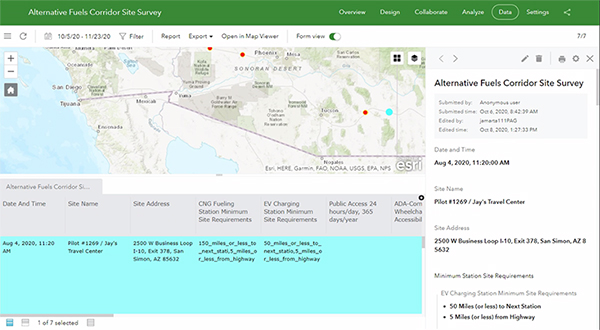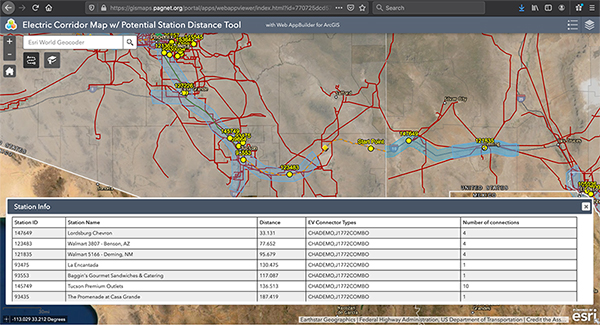Interstate 10 (I-10) through Arizona is designated as an Alternative Fuels Corridor for electric vehicle (EV) charging and compressed natural gas (CNG) fueling, with several gaps existing where there is an insufficient number of charging stations and fueling facilities.
Pima Association of Governments developed a plan to facilitate the deployment of additional EV-charging and CNG-fueling facilities along I-10, from California to New Mexico, in partnership with the Arizona Department of Transportation (ADOT) and Valley of the Sun Clean Cities Coalition, to transition these “Corridor-Pending” gap segments to “Corridor-Ready.”
In July 2019, the Federal Highway Administration called on transportation agencies to assist in planning for the deployment of alternative vehicle charging and fueling facilities on national highways under the FHWA’s Alternative Fuels Corridor Program. PAG received a planning grant from the FHWA to develop a deployment plan for 1-10.
As part of its research for developing the plan, PAG developed a survey tool, using the Esri Survey123 application, to identify potential alternative fueling sites along the I-10 corridor.

PAG also developed a route distance tool for potential stations, leveraging National Renewal Energy Laboratory (NREL) developer resources, as well as enhancements for the U.S. Department of Energy’s electric vehicle and CNG corridor maps:

- Potential Station Route Distance Tool
- EV Charging Corridor Web Map
- CNG Potential Corridor
Plan Development Meeting Information
The Arizona Interstate/Infrastructure Collaborative (AIIC) Public-Private Partnership Advisory Group was formed as an integral part of developing the plan. Quarterly webinar meetings took place during the pandemic to determine the needs, barriers and suggested results of the project. Key stakeholders were the truck stop travel center potential site hosts, due to their 24-hours-a-day/365-days-per-year operation, adequate space and parking for alternative fuel facilities and amenities such as lighting, restrooms, and food and beverages. Additional invited stakeholders included electric and natural gas utilities, EV-charging and CNG-fueling companies, project partners, various public entities and public interest groups. The AIIC gathered and provided data for cost estimates, rate plans, funding options, signage, traffic counts, EV, CNG and conventional vehicle statistics, demographics and other items for the plan.


